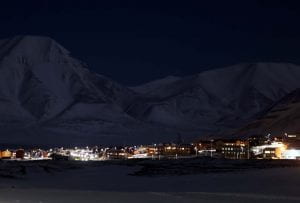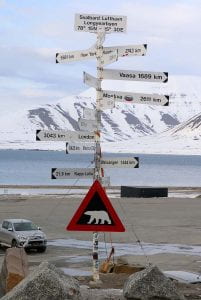What is needed for national resilience?
By Robert Hall, on 14 September 2023
Whether a community struggling to keep its members buoyant, a business trying to stay solvent or a nation fighting to protect its citizens, adversity and crises impact us all. The resilient can pick themselves up, dust off, and not only bounce back but also bounce forward. Yet, this ability is not an obvious and natural one that is easy to acquire and retain. Rather, it needs careful nurturing and maturing. It is a mindset that can be honed and deployed to help manage shocks or stresses and those in-between challenges. There is no one model of resilience but there are pointers and lessons that can help apply resilience in its many variations to overcome adversity whenever it strikes.
Building Resilient Futures is a new book that takes a fresh look at what resilience means. It examines resilience under six ‘capital’ traits – personal, emotional, organisational, urban, communal, and national. It offers insights on how to manage the consequences of upheaval and trauma in those domains. Each trait is introduced by a profile that puts the subject into context with practical and human experiences. As leadership and stewardship underpin all these capital traits, a discrete chapter is devoted to these important issues along with diversity, trust, education and training. Similarly, a separate chapter is allocated to standards, indicators and benchmarking as they cut across all aspects of resilience but are critical in assessing impact. Through a mix of theory, case-studies and anecdotes, the book reveals the nuances of resilience in a digestible and thought-provoking way. Early reviewers say the book is a valuable read!
For the purpose of this blog, which will not attempt to condense the text into a superficial summary, focus is given to that chapter which examines national resilience. This subject is very much in the news, elevated by the inspiring levels of national resistance and resilience exhibited by the Ukrainian nation in its contest with the Russians. The consequences of that war have seen millions migrating far and wide, food and fertilizer stocks severely reduced worldwide, energy prices spiking, and geopolitical tensions escalating well beyond Ukraine’s borders. The interconnectedness of dependency means that any major disruption can readily cascade into corners that were hitherto immune. Hence, we all need to know about national resilience.
One aspect that has emerged recently is how to engage large sections of a population to prepare for and deal with major, nation-wide crisis. The UK Government has released an Integrated Review (2021, refreshed in 2023) and a Resilience Framework (2022), both of which talk about a ‘whole-of-nation approach’ to resilience. This term implies drawing on the services of more than a few specialists and officials but turning to the public and private sectors on mass, the full resources of the voluntary and charity sectors, as well as the trade unions, NGOs, religious groups, schools and colleges, communities, etc. To be commensurate with the level of a national threat, wide-spread societal engagement should be measured in the hundreds of thousands if not millions. This scale was evident in Covid-19, when 750,000 people initially responded to a national call. It could well be required again either in another pandemic or as the ravages of climate change bite, or even with the spread of a European war.
The preparation of a population cannot wait until the event when it will be too late. Work on identifying and organising people who are qualified to help, training others who are willing, educating others on the sidelines, and co-ordinating resources that may be necessary, are worthwhile activities in ‘peacetime’. All this comes at a price but one that is less than the cost of a delayed recovery and heavy loss of life. It should be a government priority: the conclusions of the UK Covid-19 Inquiry may reinforce this message, as other official committees have already done so. Perhaps the formation by 2025 of a UK Resilience Academy, built out from the existing Emergency Planning College, will be an opportunity to bring a wide range of people together and work up resilience plans across all four nations of the UK.
So far, Local Resilience Forums (LRFs) are seen as the main delivery platforms for resilience across the UK at the ground level. In the government’s Resilience Framework, it is proposed that the 38 LRFs in England are strengthened through three ‘pillars’: leadership, accountability and integration. The creation of a Chief Resilience Officer (CRO) for each LRF, accountable to executive local democratic leaders, may help with wider local delivery and levelling up. Consideration will also be given to putting existing Resilience Standards onto a statutory footing for LRFs and all responder organisations.
We can certainly learn lessons from some of the Baltic and Nordic which are way ahead of the UK in preparing their populations to deal with disasters. Admittedly, these countries face the pressures of the Russian ‘bear’ to the east but having a generic plan for all eventualities is sound. In Sweden, for example, a government-appointed Commission (2017) recommended that a ‘Total Defence’ concept engaged all functions of society in the defence effort, both military and civilian. Accordingly, the parliament, the government, authorities, municipalities, private enterprises, voluntary defence organisations as well as individuals are all part of the Swedish concept. On 1 October 2022, a new structure for Swedish civil defence and crisis preparedness was announced with spending planned to increase to approximately €420 million by 2025. A publication titled ‘If crisis or war comes’ has been sent to every household and tells of practical measures to take in an emergency.
When such an idea has been proposed in the UK, it has not gained traction: it is seen by some as alarmist. Nonetheless, the government has introduced an Emergency Alerts service which was trialled for the first time this year. This may be expanded over time to include practical advice. The UK has certainly made some significant strides in national resilience planning in the past few years. But with the threat clouds darkening, we need to be much better prepared and time may not be on our side.
Robert Hall is the former Executive Director of Resilience First Ltd. He is currently writing a sequel to Building Resilient Futures looking at Natural Resilience: How the natural world can help us understand the key elements of resilience.
Read more IRDR Blogs
Follow IRDR on Twitter @UCLIRDR
 Close
Close






